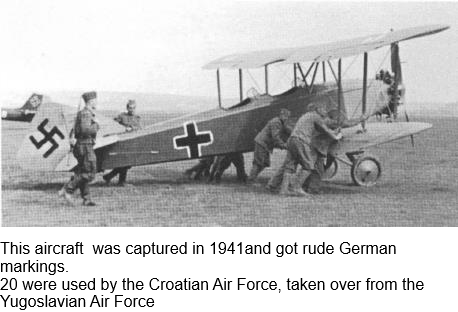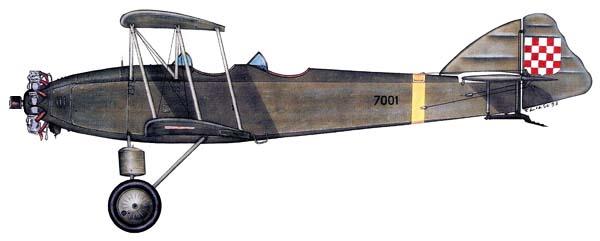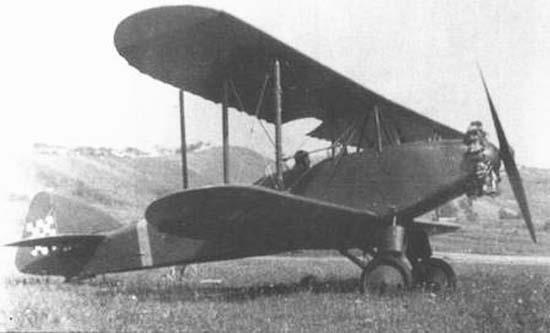The first prototype of Fizir FN (Fizir trainer) aircraft was designed and manufactured in Rudolf Fizir Workshop in Petrovaradin in 1929. Rudolf Fizir's workshop did not have the capacity for industrial production of aircraft, their area of work was design and prototyping. Although being small, this workshop played a significant role in the development of Yugoslav aeronautics after it emerged and was used for the training of engineers who later became important and famous in our aeronautical engineering.[3] Many successful airplane prototypes from this workshop were later produced in Yugoslav airplane factories.
Fizir FN was a single-engine two-seat biplane trainer with a pair of struts on each side. The wings were rounded at the tips and the flaps were located on both the lower and upper wings. The landing gear was fixed to the hinge axis. For amortization either coil springs and rubber (old type) or the rings of sand (later types) were used. The wooden structure of the fuselage and the wings were covered with a canvas. While the aircraft was in production, it underwent several refinements, aircraft was continually being refined, so that there are several sub-types of these aircraft, depending on engines installed.
The first three aircraft was produced by the Zmaj aircraft factory for the Aero Club. Given excellent flight characteristics, the Air Force Command decided to use it to replace all training aircraft that had been in use for basic training previously. At that time, for basic training pilot schools used Ikarus SB-1 (Mali Brandenburg) with a Mercedes engine ,100 hp, manufactured in 1924, so Zmaj built Hanriot H-320 with 120 hp Salmson engines manufactured in 1928. In the beginning of 1931, Zmaj produced and delivered first 20 serial Fizir FN aircraft with Walter radial engine and 10 with Mercedes 120HP inline engine. By 1939, Zmaj produced 137 aircraft, Rogožarski fabricated 40 aircraft and in the 1940 the Sremska Mitrovica-based Albatros factory produced additional 20 aircraft of this type. Before the war, the Navy Aviation ordered four hydro Fizir FN (Floatplane) with floats and with a more powerful 106 kW Walter Mars engine. The production of last 10 Fizir FN aircraft started in 1943 in Zmaj for IS Croatian Air Force, but were not finished until the liberation, when they were handed over to Aeronautical Federation of Yugoslavia.
During World War II, Yugoslav-manufactured aircraft were used by Italy in Albania, and by IS Croatia. Aircraft Fizir FN was reliable, easy to fly and maintain, so this plane stayed operative for many years (almost till 1950), as basic pilot training aircraft, both in military and civilian aviation, including sports flying.
| Type |
2-seat basic trainer |
| Engine |
1 Walter NZ 120 with a 2-bladed prop. |
| Dimensions |
Length 8,80 m , height 3,10 m , span 11,20 m , wing area 32,50 m2 , |
| Weights |
Empty 820 kg, loaded 1426 kg |
| Performance |
Max.. speed 120 km/h, 140 km/h at sea level , range 540 km, endurance , service ceiling 6500 m |
| Type |
Werk.Nr |
Registration |
History |
|
|
|
|



